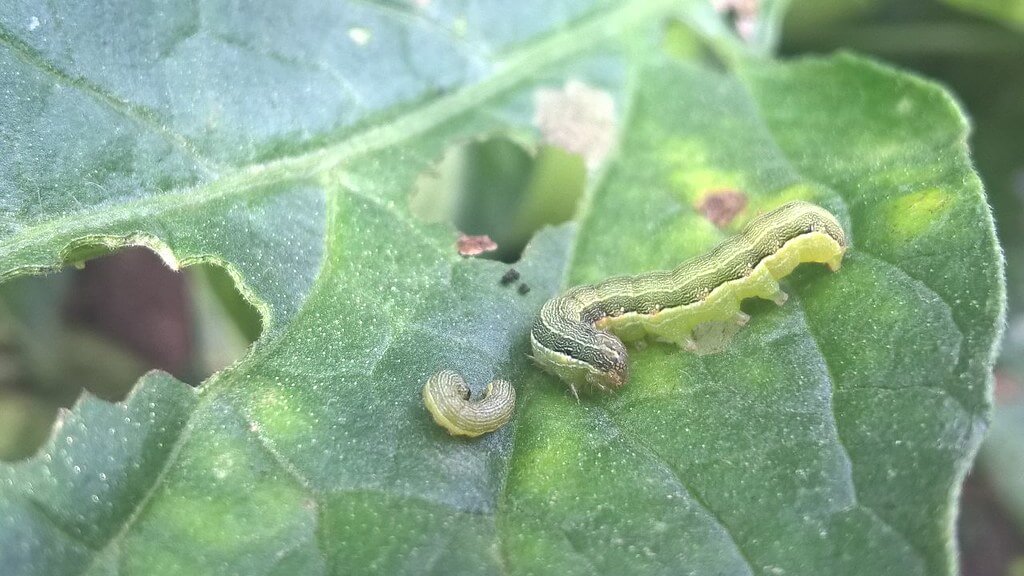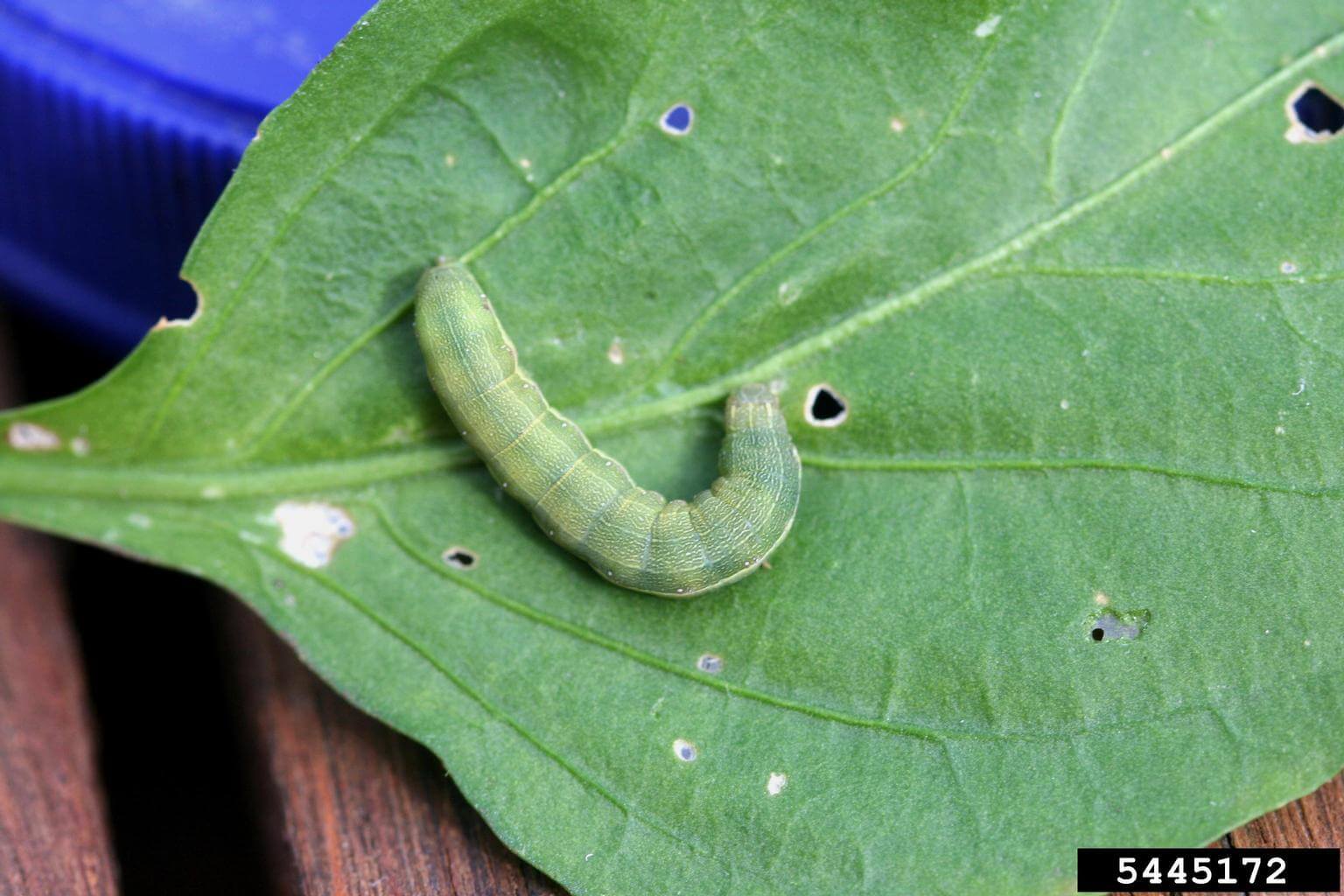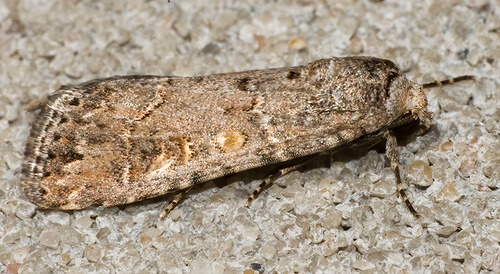
Orugas o gusanos
Gardama, green doughnut, or armyworm: what it is, how it originates, and how to eliminate it effectively.
Gardama, Green Donut, Or Armyworm
Spodoptera Exigua
Pathogen:
Insect
Type:
Risk to the plant:
HIGH



DESCRIPTION
WHO CAUSES IT?
Spodoptera exigua, commonly known as armyworm or green donut, is a species of moth whose larvae are highly harmful to various crops. Adults of Spodoptera exigua are grayish-brown moths that lay their eggs in groups, usually on the undersides of leaves. Each female can lay hundreds of eggs in her lifetime. Newly hatched larvae feed on leaf tissue, passing through five to six larval stages before becoming pupae. The pupal phase occurs in the soil, where the larva buries itself to complete its transformation into an adult. During the initial stages, the larvae are small and greenish, but as they grow, they take on a darker green or brown color with longitudinal stripes. Under favorable conditions, the pest can have several generations per year, which favors its rapid proliferation.
SYMPTOMS
In lettuce, Spodoptera exigua causes serious damage by feeding on the leaves, especially during its larval stages. Symptoms of infestation are notable, as the larvae feed on large areas of leaf tissue, leaving irregular marks and holes in the leaves. In severe infestations, plant growth is severely affected, reducing crop yield and quality. In lettuce, the infestation can result in the almost total destruction of the plant if it is not controlled in time.
- Irregular holes in the leaves.
- Partial or complete defoliation of the plant.
- Slow or stopped growth.
- Visible damage to young and mature leaves.
- Dry or withered leaves due to loss of leaf tissue.
- Presence of larval excrement on the leaves.



TEMPERATURE AND HUMIDITY
20-30°C
60-80%

HOW IS IT SPREAD?
Wind, movement of infested plants, contaminated growing tools, dispersal of flying adults

HOW TO REMOVE IT?
Home remedies
There are no home treatments
Chemical treatments
• CHLORANTRANILIPROL 35% [WG] P/P
• CYANTRANILIPROL 10% + ACIBENZOLAR-S-METHYL 1.25% [SC] P/V
• DELTAMETHRIN 1.5% [EW] P/V
• DELTAMETHRIN 2.5% [EW] P/V
• METAFLUMIZONE 24% [SC] P/V
• SPINETORAM 2.5% [SC] P/V
• Spodoptera exigua (Pheromone)
• TEBUFENOCIDE 24% [SC] P/V
Authorized treatments in organic farming
• Spodoptera exigua (Pheromone)
Insect allies
PREDATORY MITES
LADYBUGS
LACEWINGS
PARASITIC WASPS
HOVERFLIES OR PARASITIC FLIES
PREDATORY BUGS
There are no natural allies
Mycodiplosis oidii (predatory mosquito)
EFFECTIVE PRODUCTS TO ELIMINATE THIS DISEASE
Sponsored link
Sponsored link
Sponsored link
Sponsored link
Sponsored link
Sponsored link
Sponsored link
Sponsored link
Sponsored link
Effective against all types of fungi
Sponsored link
Sponsored link
Sponsored link
Sponsored link
Sponsored link
Sponsored link
Sponsored link
- Constantly monitor crops to detect the presence of eggs or larvae early.
- Implement pheromone traps to capture adults and reduce the chances of reproduction.
- Maintain adequate soil management, eliminating plant residues that may harbor pupae.
- Prune the affected parts of the plant to reduce the spread of the pest.
- Introduce biological controllers such as parasitic wasps and natural predators of the larvae.
- Apply specific selective insecticides for lepidopterans when larval populations exceed economic damage thresholds.
- Rotate crops to avoid the accumulation of the pest in the soil and reduce pressure on the crop.
- Use soil covers to make it difficult for larvae to access the soil to pupate.
- Avoid the indiscriminate use of broad-spectrum chemicals to preserve the pest's natural enemies.
- Apply biological products based on Bacillus thuringiensis to attack larvae in their first stages of development.
























